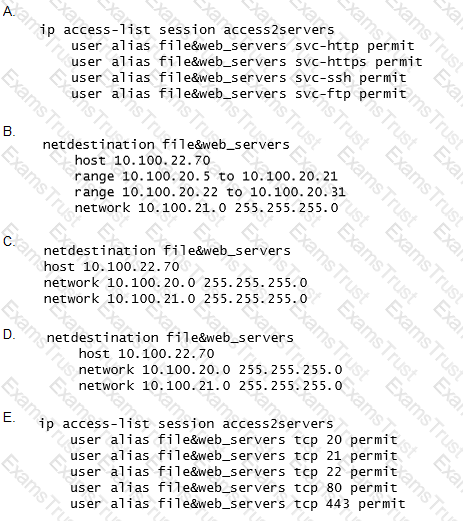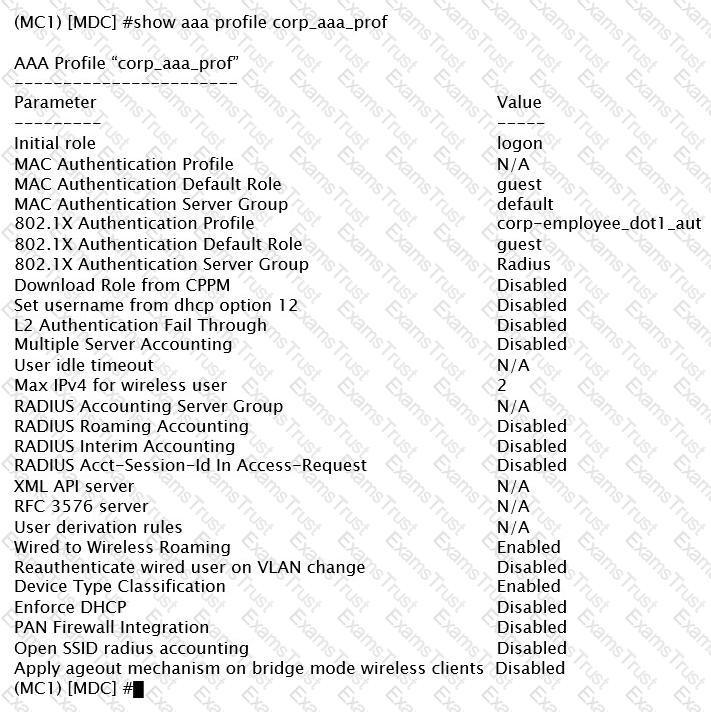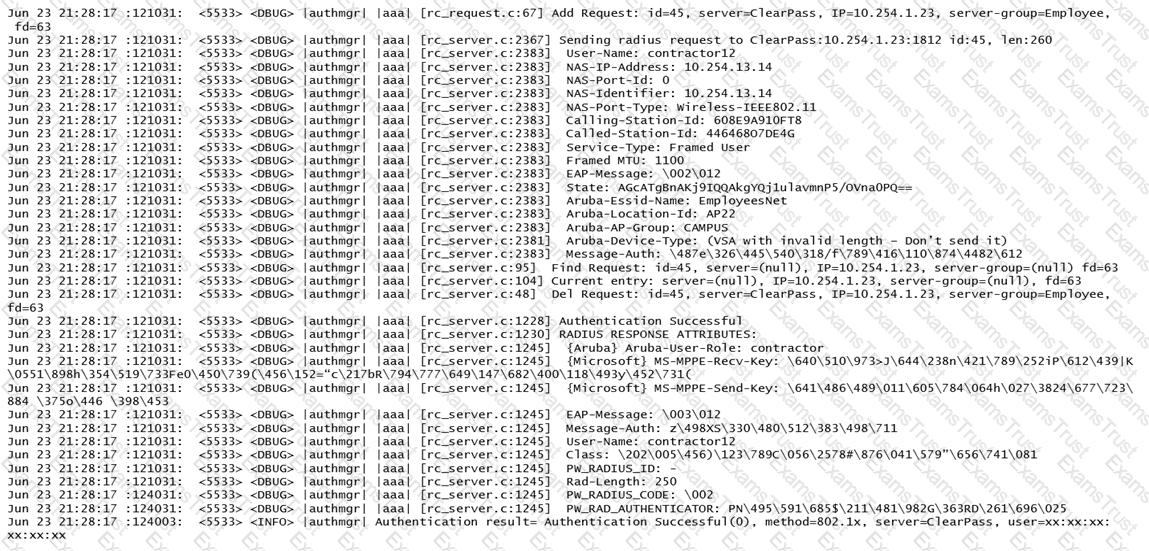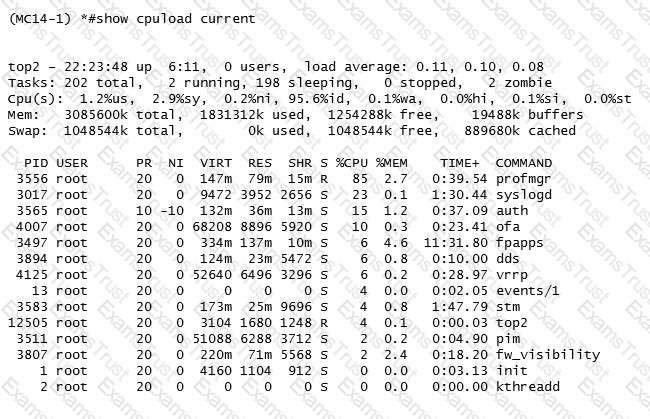A company with 535 users deploys an Aruba solution with more than 1000 Aruba APs, two 7220 Mobility Controllers, and a single Mobility Master (MM) virtual appliance at the campus server farm. The MCs run a HA Fast failover group in dual mode and operate at 50% AP capacity.
If there is an MM or MC failure, the network administrator must ensure that the network is fully manageable and the MC load does not exceed 80%.
What can the network administrator do to meet these requirements?
A network administrator wants to permit explicit SSH, FTP and HHTP(s) access to servers in the 10.100.20.5 to 10.100.20.31 range, all devices in 10.100.21.0/24 network, and a host with IP address 10.100.22.70. The services must work properly at all times.
Which configuration scripts accomplish this task with the fewer number of lines, while avoiding access to other devices not included in these ranges? (Choose two.)

Refer to the exhibit.

A network engineer deploys two different DHCP pools in an Instant AP (IAP) cluster for WLANs that will have connectivity to a remote site using Aruba IPSec.
Based on the output shown in the exhibit, which IAP-VPN DHCP modes are being used?
Refer to the exhibit.

A network administrator has created AAA profile for the corporate VAP. In addition to the regular Radius based authentication, the administrator needs to be able to disconnect the users from either of the two servers that are part of the “Radius” server group.
What must the administrator do next in order to achieve this goal?
A network administrator assists with the migration of a WLAN from a third-party vendor to Aruba in different locations throughout the country. In order to manage the solution from a central point, the network administrator decides to deploy redundant Mobility Masters (MMs) in a datacenter that are reachable through the Internet.
Since not all locations own public IP addresses, the security team is not able to configure strict firewall polices at the datacenter without disrupting some MM to Mobility Controller (MC) communications. They are also concerned about exposing the MMs to unauthorized inbound connection attempts.
What should the network administrator do to ensure the solution is functional and secure?
Refer to the exhibit.

A network administrator wants to allow contractors to access the WLAN named EmployeesNet. In order to restrict network access, the network administrator wants to assign this category of users to the contractor user role. To do this, the network administrator configures ClearPass in a way that it returns the Aruba-User-Role with the contractor value.
When testing the solution, the network administrator receives the wrong role.
What should the network administrator do to assign the contractor role to contractor users without affecting any other role assignment?
Refer to the exhibits.
Exhibit 1

Exhibit 2

A network administrator adds a new Mobility Controller (MC) to the production Mobility Master (MM) and deploys APs that start broadcasting the employee SSID in the West wing of the building. Suddenly, the employees report client disconnects. When accessing the MM the network administrator notices that the MC is unreachable, then proceeds to access the MC’s console and obtains the outputs shown in the exhibits.
What should the network administrator do next to solve the current problem?
A company plans to build a resort that includes a hotel with 1610 rooms, a casino, and a convention center. The company is interested in a mobility solution that provides scalability and a service-based approach, where they can rent the WLAN infrastructure at the convention center to any customer (tenant) that hosts events at the resort.
The solution should provide:
• Seamless roaming when users move from the hotel to the casino or the convention center
• Simultaneous propagation of the resort and customer-owned SSIDs at the convention center
• Null management access upon resort network infrastructure to the customers (tenants)
• Configuration and monitor rights of rented SSIDs to the customers (tenants)
Which deployment meets the requirements?